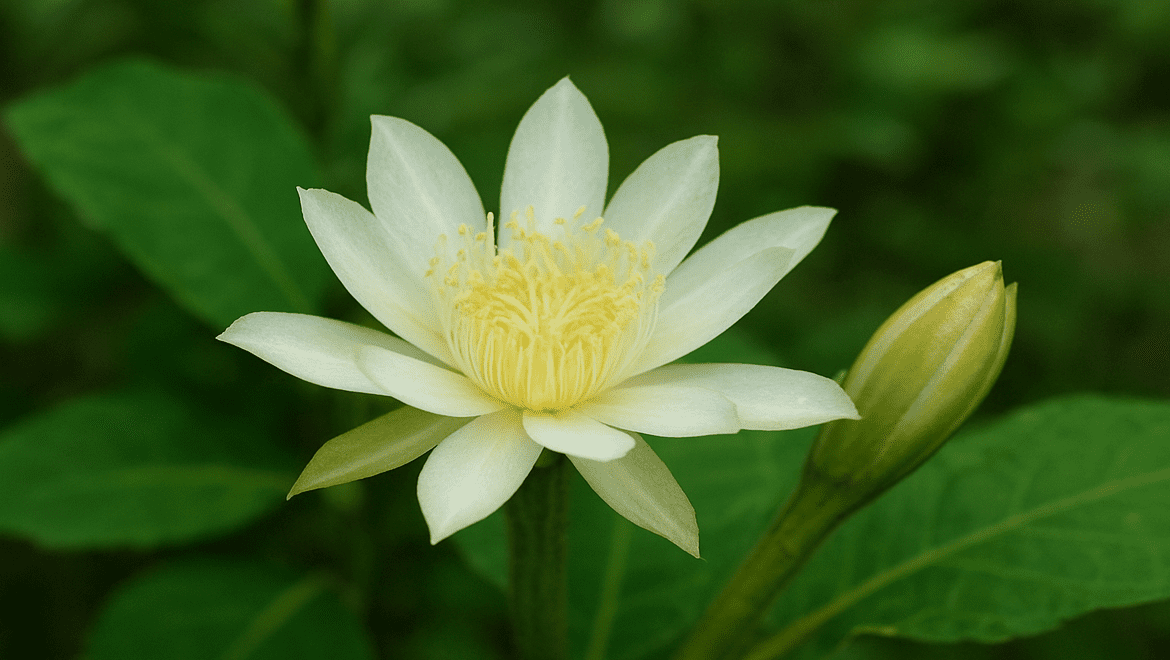- Your cart is empty
- Continue shopping
The Brahma Kamal flowering season is a natural wonder that fascinates both botanists and spiritual seekers. Known as the “King of Himalayan flowers,” Brahma Kamal blooms under very specific conditions. This phenomenon makes it rare and extraordinary. It’s found in the high altitudes of Uttarakhand, Himachal Pradesh, and parts of Tibet.
This flower holds deep cultural, medicinal, and ecological importance. Understanding its flowering season is the key to successful growth. The right weather conditions make it thrive and enhance its beauty.
Origin and Natural Habitat
Brahma Kamal (Saussurea obvallata) thrives in the harsh yet pristine environment of the Himalayas. It is typically found at altitudes ranging from 3,000 to 4,600 meters above sea level. The unique weather of these regions, with cold winds, low oxygen levels, and a short summer, creates the ideal setting for the plant’s growth. The Brahma Kamal flowering season is aligned with high-altitude summer conditions.
When is the Brahma Kamal Flowering Season?
The Brahma Kamal flowering season usually occurs between July and September. It’ s majorly during the Himalayan monsoon and post-monsoon months. This is the time when temperatures are relatively mild compared to the harsh winters and scorching sunlight of other months.
- July–August: The early monsoon showers provide enough moisture for the plant to initiate the blooming process.
- August–September: This is the peak Brahma Kamal flowering season. At this time, large numbers of flowers bloom together, creating a breathtaking view in the alpine meadows.
Since the flowering season is short, nature lovers and devotees often travel to the Himalayas during this period to witness the bloom.
Weather Conditions for Blooming
The weather plays a crucial role in the Brahma Kamal flowering season. This flower does not bloom in ordinary climates; it requires a rare combination of altitude, temperature, and humidity.
- Cool Climate: Brahma Kamal blooms in cool temperatures ranging from 8°C to 20°C.
- Moisture in Air: The monsoon adds humidity, which helps the flower buds mature.
- Low Oxygen Environment: Interestingly, the thin atmosphere of high altitudes promotes its growth, something that cannot be recreated easily in the plains.
- Soil Conditions: Brahma Kamal thrives in rocky, well-drained soils that receive occasional rainfall but never get waterlogged.
This is why the flower is so rare outside its natural habitat.
Symbolic Significance of Flowering
The timing of the Brahma Kamal flowering season is not only a natural event but also a spiritual one. In Hindu mythology, the flower is associated with Lord Brahma, the creator. Blooming during the monsoon is symbolic of rebirth, creation, and renewal of life. Locals also believe that sighting the flower during its season brings blessings and prosperity.
Challenges in Flowering Outside Himalayas
Many gardeners and plant lovers attempt to grow Brahma Kamal in pots at lower altitudes. While the plant may survive, recreating the exact weather for the Brahma Kamal flowering season is extremely challenging.
- Lack of cool monsoon temperatures
- Difficulty in maintaining humidity without fungal infections
- Unsuitable soil conditions in plains
- Limited sunlight balance (too much or too little damages blooming)
Even if cultivated in botanical gardens, the bloom is often sporadic and does not match the Himalayan flowering spectacle.
How to Care for Brahma Kamal During Flowering Season
For those who manage to grow Brahma Kamal outside its natural region, careful attention during its flowering season is crucial.
- Watering: Moderate, only when the soil dries up. Avoid excess water.
- Temperature: Keep the plant in a shaded cool spot during peak summers.
- Soil Mix: Use sandy or rocky soil to mimic its natural conditions.
- Container: A deep pot helps the roots spread better.
- Fertilization: Use organic compost lightly before the flowering season to support healthy blooms.
These steps increase the chance of flowering, though results still depend heavily on regional weather.
Conservation of Brahma Kamal
Because of its limited flowering season and high demand, Brahma Kamal is classified as a protected species in Uttarakhand. Over-plucking and habitat destruction threaten its survival. Conservation efforts encourage responsible tourism, protection of alpine meadows, and awareness about the flower’s ecological role. By respecting its natural flowering cycle, we can ensure this rare bloom continues to enchant generations.
Conclusion
The Brahma Kamal flowering season is a natural and spiritual phenomenon that takes place from July to September in the cool, moist Himalayan climate. Its bloom depends on unique weather conditions, making it rare and special.
For devotees, it symbolizes divine blessings; for botanists, it represents ecological adaptation. Whether admired in its natural habitat or nurtured in home gardens, Brahma Kamal continues to be a flower of reverence and wonder.
Follow HariDukaan on Instagram for more!

